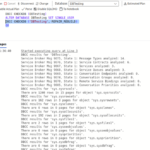EPEL stands for Extra Packages for Enterprise Linux. It is a Fedora Special Interest Group that creates, maintains, and manages a high quality set of additional packages for Enterprise Linux such as Red Hat Enterprise Linux (RHEL), CentOS and Scientific Linux (SL). EPEL repository has more than 8000 packages and it was started by some Fedora contributors mainly for using Fedora packages they maintain on RHEL and it’s derivatives.
EPEL works closely with Fedora project and uses the same guidelines, rules, policies, and infrastructure, as far as possible. EPEL packages are usually based on their Fedora counterparts and will never conflict with or replace packages in the base Enterprise Linux distributions. It can be used by any Linux user to install packages that exist in Fedora and were not included in a RHEL version .
Adding EPEL Repository to RHEL / CentOS / Scientific Linux 6.x
EPEL is available as rpm, therefore you can install it on your system. You don’t have to manually add any entries on /etc/yum.repos.d/ directory of your system. Since it is available as noarch rpm, you can install it on both 32 and 64 bit systems. I tested this how-to on CentOS 6.5, however it will work on all 6.x versions.
First go to the EPEL repository download page. Download the latest EPEL rpm and install it as shown below.
# wget http://epel.mirror.net.in/epel/6/i386/epel-release-6-8.noarch.rpm # rpm -Uvh epel-release-6-8.noarch.rpm
Adding EPEL Repository to RHEL / CentOS / Scientific Linux 5.x
First go to the EPEL repository download page. Download the latest EPEL rpm and install it as shown below.
# wget http://epel.mirror.net.in/epel/5/i386/epel-release-5-4.noarch.rpm # rpm -Uvh epel-release-5-4.noarch.rpm
Now list out the installed repositories using command:
# yum repolist
Sample output:
Loaded plugins: fastestmirror, security
Determining fastest mirrors
* base: mirror.leapswitch.com
* epel: epel.mirror.net.in
* extras: mirror.leapswitch.com
* updates: mirror.leapswitch.com
repo id repo name status
base CentOS-6 - Base 4,802
epel Extra Packages for Enterprise Linux 6 - i386 8,385
extras CentOS-6 - Extras 12
updates CentOS-6 - Updates 211
repolist: 13,410
Install Packages
Now you can install the packages as usual with command:
# yum install bugzilla
Hence bugzilla is not available in the default repositories, you will see that bugzilla is installed from EPEL repository.
Install packages from EPEL repository only
Let us install a package from EPEL repository. I am gonna install bugzilla package from EPEL repository. The below command shows that i disabled all existing repositories and install the httpd package form EPEL repository.
# yum install --disablerepo="*" --enablerepo=epel bugzilla
View a Package details
Also you can view the package information using command:
# yum info bugzilla
Sample output:
Loaded plugins: fastestmirror, security Loading mirror speeds from cached hostfile * base: mirror.leapswitch.com * epel: epel.mirror.net.in * extras: mirror.leapswitch.com * updates: mirror.leapswitch.com Available Packages Name : bugzilla Arch : noarch Version : 3.4.14 Release : 1.el6 Size : 953 k Repo : epel Summary : Bug tracking system URL : http://www.bugzilla.org/ License : MPLv1.1 Description : Bugzilla is a popular bug tracking system used by multiple open source projects : It requires a database engine installed - either MySQL, PostgreSQL or Oracle. : Without one of these database engines (local or remote), Bugzilla will not work : - see the Release Notes for details.
That’s it. You can now install packages which are not included in the RHEL version.
Don’t forget to check out our article about how to install REMI repository.





